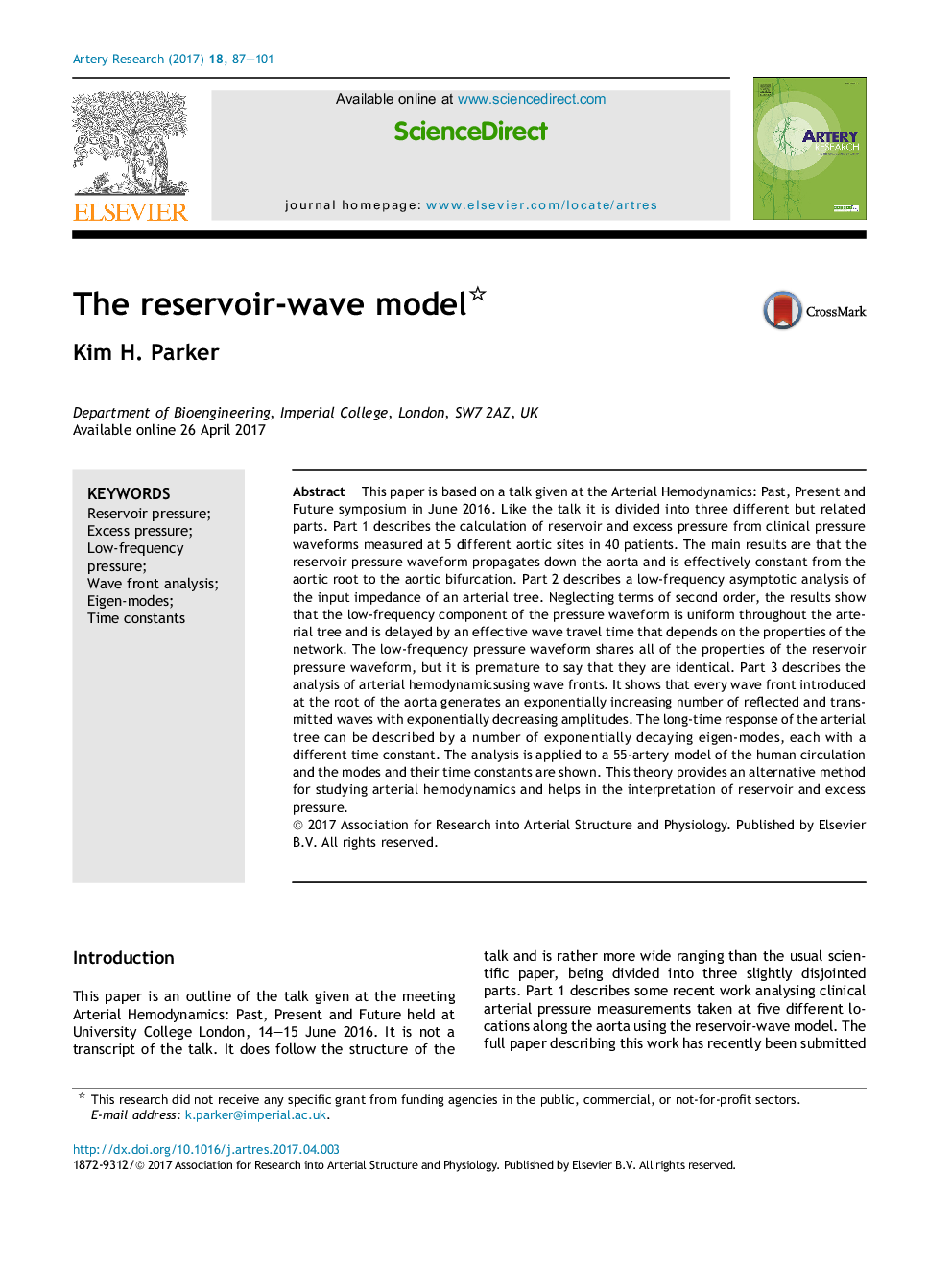| Article ID | Journal | Published Year | Pages | File Type |
|---|---|---|---|---|
| 5599218 | Artery Research | 2017 | 15 Pages |
Abstract
This paper is based on a talk given at the Arterial Hemodynamics: Past, Present and Future symposium in June 2016. Like the talk it is divided into three different but related parts. Part 1 describes the calculation of reservoir and excess pressure from clinical pressure waveforms measured at 5 different aortic sites in 40 patients. The main results are that the reservoir pressure waveform propagates down the aorta and is effectively constant from the aortic root to the aortic bifurcation. Part 2 describes a low-frequency asymptotic analysis of the input impedance of an arterial tree. Neglecting terms of second order, the results show that the low-frequency component of the pressure waveform is uniform throughout the arterial tree and is delayed by an effective wave travel time that depends on the properties of the network. The low-frequency pressure waveform shares all of the properties of the reservoir pressure waveform, but it is premature to say that they are identical. Part 3 describes the analysis of arterial hemodynamicsusing wave fronts. It shows that every wave front introduced at the root of the aorta generates an exponentially increasing number of reflected and transmitted waves with exponentially decreasing amplitudes. The long-time response of the arterial tree can be described by a number of exponentially decaying eigen-modes, each with a different time constant. The analysis is applied to a 55-artery model of the human circulation and the modes and their time constants are shown. This theory provides an alternative method for studying arterial hemodynamics and helps in the interpretation of reservoir and excess pressure.
Related Topics
Health Sciences
Medicine and Dentistry
Cardiology and Cardiovascular Medicine
Authors
Kim H. Parker,
